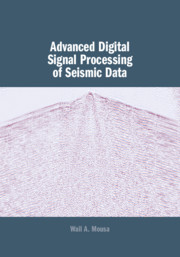Refine listing
Actions for selected content:
1211 results in Ebooks in petroleum sciences
1 - Basic Tools
-
- Book:
- The Rock Physics Handbook
- Published online:
- 05 March 2020
- Print publication:
- 09 January 2020, pp 1-36
-
- Chapter
- Export citation
Appendices
- from Appendices
-
- Book:
- The Rock Physics Handbook
- Published online:
- 05 March 2020
- Print publication:
- 09 January 2020, pp 613-672
-
- Chapter
- Export citation
Appendices
-
- Book:
- The Rock Physics Handbook
- Published online:
- 05 March 2020
- Print publication:
- 09 January 2020, pp 613-672
-
- Chapter
- Export citation
Reviews
-
- Book:
- The Rock Physics Handbook
- Published online:
- 05 March 2020
- Print publication:
- 09 January 2020, pp ii-ii
-
- Chapter
- Export citation
References
-
- Book:
- The Rock Physics Handbook
- Published online:
- 05 March 2020
- Print publication:
- 09 January 2020, pp 673-715
-
- Chapter
- Export citation
Index
-
- Book:
- The Rock Physics Handbook
- Published online:
- 05 March 2020
- Print publication:
- 09 January 2020, pp 716-728
-
- Chapter
- Export citation
5 - Granular Media
-
- Book:
- The Rock Physics Handbook
- Published online:
- 05 March 2020
- Print publication:
- 09 January 2020, pp 309-366
-
- Chapter
- Export citation
Copyright page
-
- Book:
- The Rock Physics Handbook
- Published online:
- 05 March 2020
- Print publication:
- 09 January 2020, pp iv-iv
-
- Chapter
- Export citation
7 - Empirical Relations
-
- Book:
- The Rock Physics Handbook
- Published online:
- 05 March 2020
- Print publication:
- 09 January 2020, pp 474-524
-
- Chapter
- Export citation
9 - Electrical Properties
-
- Book:
- The Rock Physics Handbook
- Published online:
- 05 March 2020
- Print publication:
- 09 January 2020, pp 577-612
-
- Chapter
- Export citation
6 - Fluid Effects on Wave Propagation
-
- Book:
- The Rock Physics Handbook
- Published online:
- 05 March 2020
- Print publication:
- 09 January 2020, pp 367-473
-
- Chapter
- Export citation
8 - Flow and Diffusion
-
- Book:
- The Rock Physics Handbook
- Published online:
- 05 March 2020
- Print publication:
- 09 January 2020, pp 525-576
-
- Chapter
- Export citation
4 - Effective Elastic Media: Bounds and Mixing Laws
-
- Book:
- The Rock Physics Handbook
- Published online:
- 05 March 2020
- Print publication:
- 09 January 2020, pp 220-308
-
- Chapter
- Export citation
2 - Elasticity and Hooke’s Law
-
- Book:
- The Rock Physics Handbook
- Published online:
- 05 March 2020
- Print publication:
- 09 January 2020, pp 37-120
-
- Chapter
- Export citation
Preface to the Third Edition
-
- Book:
- The Rock Physics Handbook
- Published online:
- 05 March 2020
- Print publication:
- 09 January 2020, pp xi-xii
-
- Chapter
- Export citation

Advanced Digital Signal Processing of Seismic Data
-
- Published online:
- 24 December 2019
- Print publication:
- 16 January 2020
Chapter 3 - Middle Mesozoic Drift and Cooling Phase
- from Part II - Mesozoic Depositional Evolution
-
- Book:
- The Gulf of Mexico Sedimentary Basin
- Published online:
- 13 September 2019
- Print publication:
- 21 November 2019, pp 65-100
-
- Chapter
- Export citation
Contents
-
- Book:
- The Gulf of Mexico Sedimentary Basin
- Published online:
- 13 September 2019
- Print publication:
- 21 November 2019, pp vii-x
-
- Chapter
- Export citation
Chapter 7 - Cenozoic Depositional History 3
- from Part III - Cenozoic Depositional Evolution
-
- Book:
- The Gulf of Mexico Sedimentary Basin
- Published online:
- 13 September 2019
- Print publication:
- 21 November 2019, pp 211-230
-
- Chapter
- Export citation
Part I - Introduction
-
- Book:
- The Gulf of Mexico Sedimentary Basin
- Published online:
- 13 September 2019
- Print publication:
- 21 November 2019, pp 1-52
-
- Chapter
- Export citation
